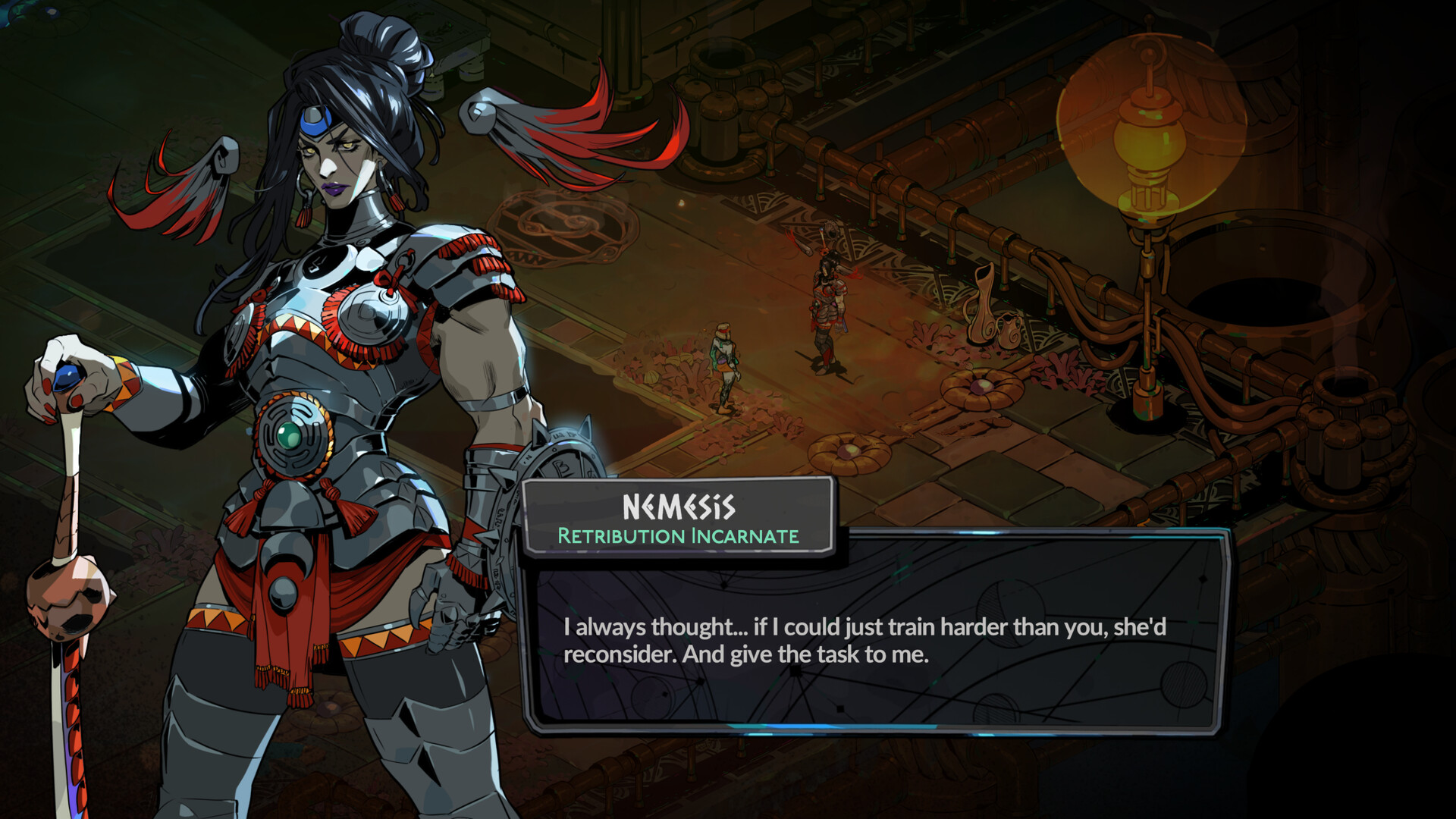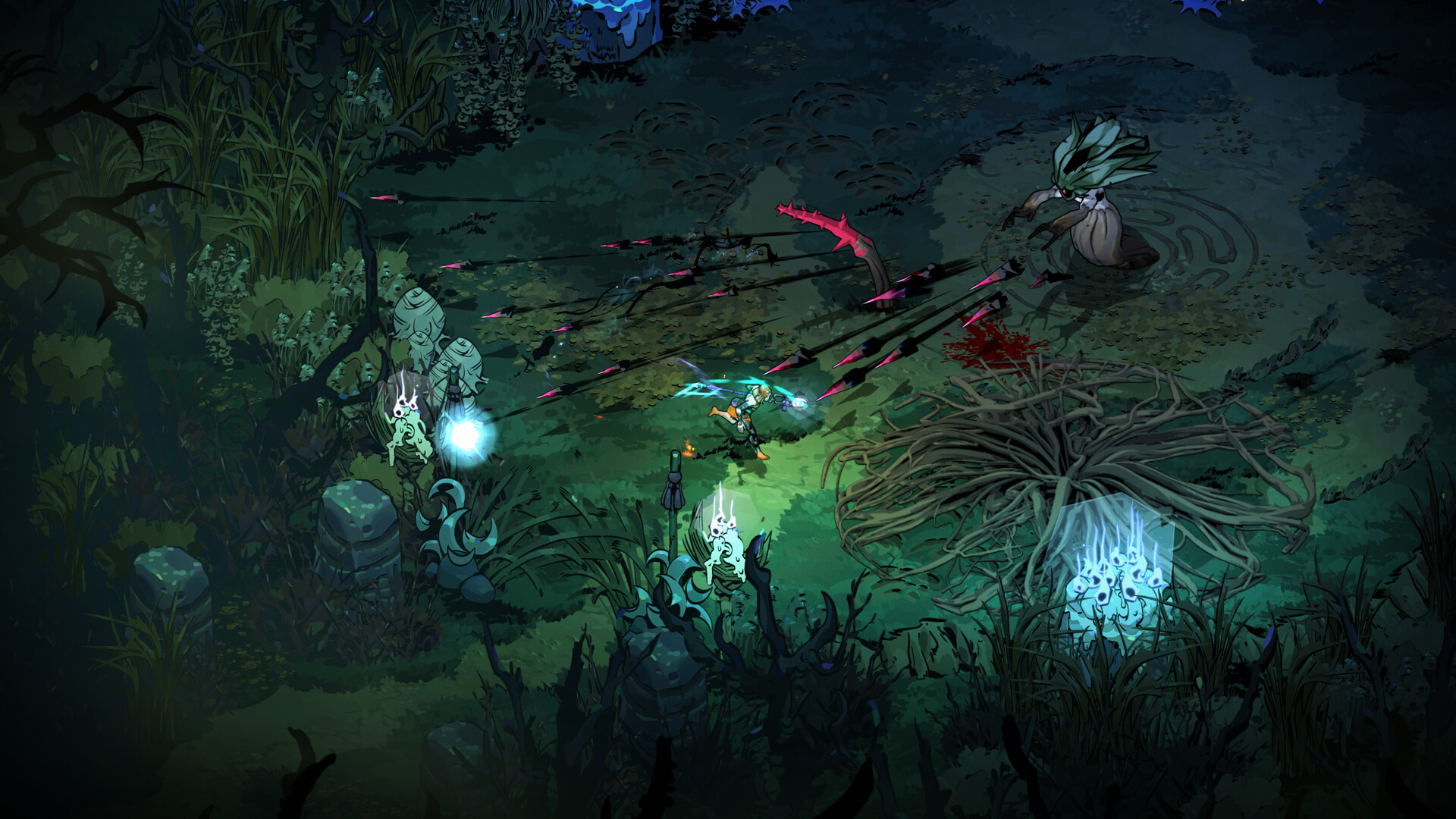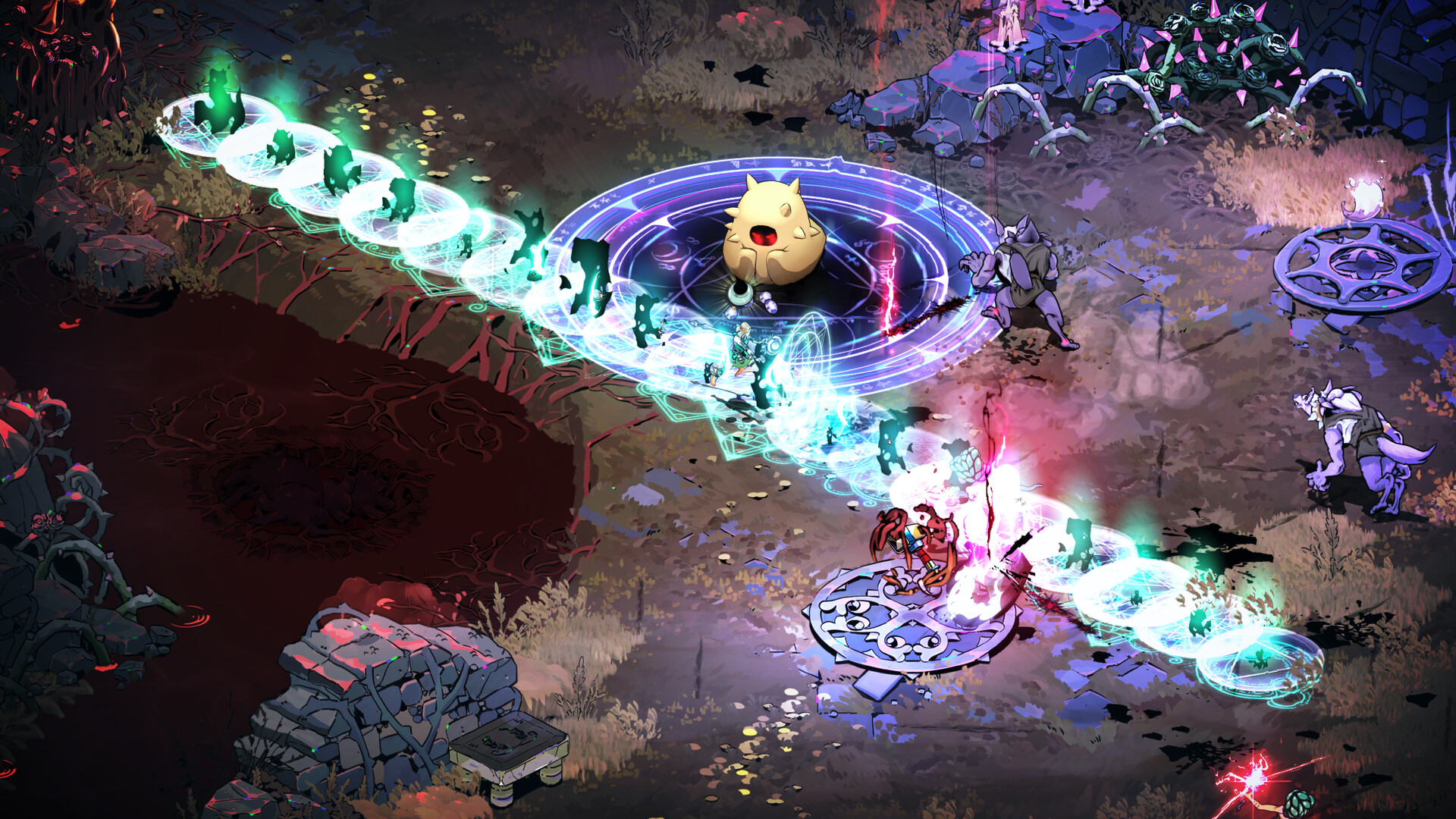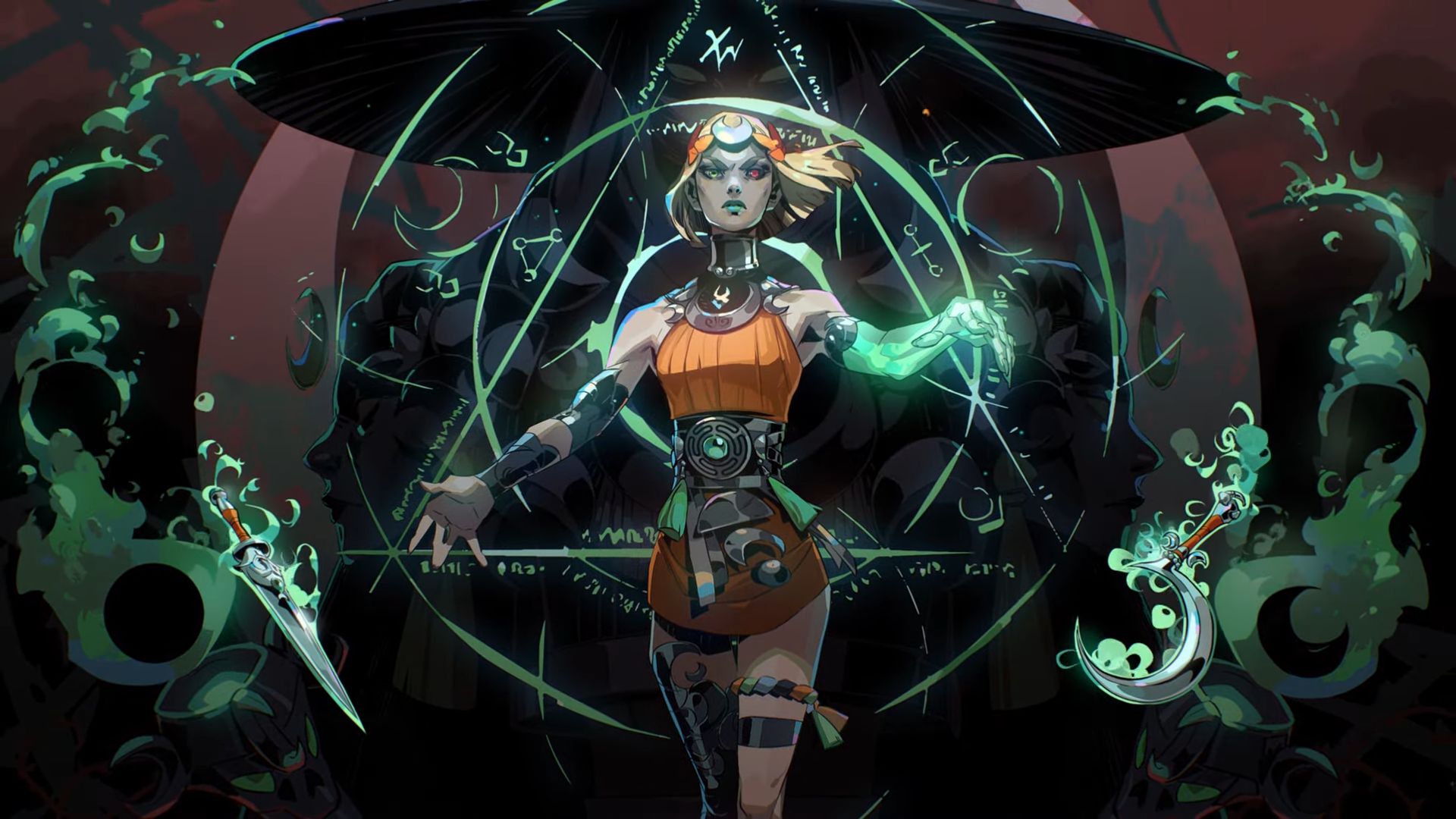Hades 2 is a bit of an anomaly for Supergiant Games. For a developer that avoids dabbling in sequels, it’s just that. When it was announced, there was suitable hype and more than a bit of concern about whether it would live up to expectations. Now it’s available in early access for PC via Steam and the Epic Games Store, there’s no two ways about it: Hades 2 is beautiful, enthralling, involving and also addictive.
If you’re a fan of the first game, then, well, this review is superfluous. You’re probably already in there, having a blast and maybe discovering new ways to break the game. For those who didn’t know what to expect following the recent technical test or wondered how it differs from the first game, Hades 2 in early access offers a lot more. More fully-voiced characters, more environments and more enemies than the entirety of its predecessor – even by early access standards, it’s awe-inspiring.
“The most noticeable shift from Zagreus to Melinoë is their temperance. The latter is often more composed, capable of spotting someone riling her up, but also not aloof when it comes to those she cares about.”
While not quite feature-complete – several places have placeholder art and icons, the “true” ending isn’t in place – there are yet more characters, systems, narrative content and environments to come. Nevertheless, it’s packed with quality content, hundreds of lines of superb dialogue, memorable boss battles, another excellent soundtrack by Darren Korb, and many new ideas and mechanics that transcend the original.
Yet none of it is overwhelming, whether you embrace a new upgrade system or master the new Infernal Arms and their Omega attacks. Hades 2 isn’t just a worthwhile sequel that builds on every aspect of its predecessor but yet another stellar example of early access done right (and another phenomenal title from Supergiant, but that’s probably the least surprising part).
Zagreus isn’t the hero this time – instead, it’s Melinoë, his sister, daughter of Hades and Princess of the Underworld. Following the return of Chronos, the House of Hades is subsequently taken over, and the family is taken away. Melinoë escapes, and after years of being raised by Hecate, and learning to defend herself, Melinoë embarks on a mission to slay Chronos and save her family.
Of course, the story goes beyond a simple revenge quest, as Olympus is also under siege by the forces of Chronos (which makes sense, given they were the ones to dispose of him). Common interests align, however, and thus, the Greek Pantheon lends its Boons to Melinoë when possible. Right off the bat, the most noticeable shift from Zagreus to Melinoë is their temperance. The latter is often more composed, capable of spotting someone riling her up, but also not aloof when it comes to those she cares about.
There are also instances of self-doubt, not only in her abilities with each failure but also in whether she can muster the “rage” to slay Chronos since she doesn’t even know her family that well. Even with all that in mind, however, she pushes forward, devoted to her task and saving her kin while doling out punishment to those who betrayed the House of Hades. Like Zagreus, however, she’s empathetic and respectful, going out of her way to help others and pay her dues to Olympus.
“Eagle-eyed fans of the first game will doubtless have noticed the changes to Boons and the new mechanics. Some will reserve a specific amount of your mana bar for passive effects like added attack power, armor, reduced damage and more.”
The rest of the cast is also superbly well-written and voiced, whether it’s Hecate and her wisdom, Odysseus and his easy going nature (which belies his tactical approach) and Nemesis, part-dismissive, part-envious of Melinoë for taking on the task to defeat Chronos.
Outside of your base camp in the Crossroads, all the noticeable characters are here, from Zeus and his lightning damage to Poseidon, thankfully receiving a rework in how his tidal attacks work. Demeter is still great at inflicting freeze, though she no longer turns your casts into lasers (at least, not initially), Hermes is still speed-focused, and Artemis is still the choice for crit damage and unleashing seeking arrows.
It’s the new additions which are worth noting. Apollo is Light-focused, which means his Boons can have a chance to inflict Daze and cause enemies to miss their attacks. You also get a damage increase for as long as you don’t get hit in an encounter and an increased area of effect for attacks. I didn’t get Hestia too much on my runs, but her speciality is Scorch, and it can be satisfying to send out fireballs with your Special attacks (since they no longer have limited uses).
As with the first game, Boons also exist, whether it’s weakening the damage from bosses, increasing the amount of mana gained up to a point and much more, and they can all be upgraded.
Eagle-eyed fans of the first game will doubtless have noticed the changes to Boons and the new mechanics. Some will reserve a specific amount of your mana bar for passive effects like added attack power, armor, reduced damage and more. Once you unlock Elemental Affinities, collecting elements associated with specific Boons (or as special rewards from events) can allow for other special Boons, like increasing dodge chance.

“While some options feel undeniably better than others (like Poseidon’s passive damage reduction), the number of viable build options is still impressive.”
As a whole, the build-crafting options for a run have gone up significantly, and that’s before delving into the combat. Early access offers five weapons – you start with the Witch’s Staff and have the standard melee attacks and combo, dash attack and special for ranged damage. However, Hades 2 introduces mana for Omega versions of attacks. For example, the Witch’s Staff functions much like a spear, but if you hold the attack button, it unleashes a straight line of devastating magic. Similarly, that Special can turn a powerful orb that explodes to damage enemies in a larger area.
Like with the first game, the other weapons offer vastly different playstyles, with the Sister Blades ideal for fast attacks and backstabs while the Moonstone Axe unleashes heavy hits, a charged whirlwind and even a block. If that weren’t enough, you also have a Cast, a spell that damages enemies in an area but takes some time to trigger.
Start tossing in Boons and upgrades – with Poms of Power and the Daedalus Hammer returning – and you can deal increased backstab damage with the Sister Blades, ideal for its Omega attack, a Cast that unleashes a multi-hit attack, a dash that weakens enemies, and an Omega Special with ricocheting knives. Since you can also sprint, you can even conjure a barrier to negate one instance of damage while running.
But wait, there’s more – by taking on the upgrades of Selene, Goddess of the Moon, you can harness a powerful Ultimate-like skill. Consume a set amount of mana to prep it, and you can dive bomb enemies, resurrect a slain foe to fight for you, drop a lunar nuke, unleash a powerful laser or harness an invulnerable form with unique abilities for a brief period. Each of these has its own upgrade tree, further diversifying the available bonuses when using and not using them.
While some options feel undeniably better than others (like Poseidon’s passive damage reduction), the number of viable build options is still impressive. It also doesn’t hurt that entities like Chaos exist to further shake things up, helping to fix problems with movement speed, mana regen and so on, provided you can complete their trials.

“Of course, there’s also the persistent progression offered by the Arcana Cards to consider. Unlocked with Ash, you can equip them based on the number of slots available (which Melinoë can increase by using Psych).”
Combat in Hades 2 wouldn’t feel nearly as compelling if it didn’t have the threats to match, but fortunately, that’s not the case. It may start simply enough yet subsequent locations like Oceanus and the Fields of Mourning present more challenging threats. Armored foes are still as annoying as ever, but you also deal with enemies that shroud areas, continuously channel lightning or bumrush you with sheer numbers. While you grow stronger, the forces of Chronos adapt accordingly, tossing new enemy types into the mix, so finding the right upgrades and benefits for your setup is key.
The regions themselves are also more ambitious in scope than Hades. The woods of Erebus are just the tutorial – Oceanus is like a dive through dilapidated waterworks, with sea serpents and other hostile fish to deal with when you’re not dodging steam traps. The Fields of Mourning are open and offer optional rewards, but finding and activating a golden tree is necessary to locate your rewards and the exits. Infiltrating the House of Hades to face Chronos also presents familiar enemies, including those darned Satyrs.
There’s much more to see than you’d initially expect, and it’s all wonderfully realized. As for the bosses, you need to experience them for yourself. If you thought the Furies were a fun boss fight in the first game, Scylla and the Sirens offer a can’t-miss performance.
Of course, there’s also the persistent progression offered by the Arcana Cards to consider. Unlocked with Ash, you can equip them based on the number of slots available (which Melinoë can increase by using Psych). Some offer benefits like increased starting health and Mana or passive mana regen, while others don’t take up any slots but require customizing your deck in a specific way. Want to take advantage of an increased dodge chance? You better have at least three cards that occupy three slots activated at a time.

“While many aspects of Hades 2 carry over from the first game, the visuals are a definite step up. The environments are even more detailed, brimming with gorgeous effects, lighting, shadows and particle effects.”
Incantations become available as you progress and use gathered materials for different unlocks, like break rooms to recover health, reinstating the Wells of Charon, placing a Keepsake Shelf at the end of each region to switch them out, and so on. The Fated List of Minor Prophecies provides rewards for completing various tasks, and you can also pay Charon to ship certain materials to you between runs.
If all of this wasn’t enough, there are new gathering tools for mining and digging materials, fishing and even a Simon Says-style mini-game to pacify shades and bring them back to the Crossroads for rewards. Perhaps my only criticism is having to choose only gathering one tool at a time – carrying at least two would be great.
While many aspects of Hades 2 carry over from the first game, the visuals are a definite step up. The environments are even more detailed, brimming with gorgeous effects, lighting, shadows and particle effects. The character portraits are still as incredible as ever, though many returning characters have received redesigns. While it works well enough for Zeus, Poseidon and Demeter, Artemis feels a little barebones compared to the first game. Early access and all that jazz, so expect improvements down the line.
However, it must be reiterated – the sheer polish on offer here is simply incredible. I faced only one major bug where my dash and sprint suddenly stopped working, and that was fixed by simply restarting the game. There is work to be done with some of the character designs, interfaces and icons, but even with multiple spells and effects going off simultaneously with dozens of enemies, performance is buttery-smooth.

“Whether it’s for the story and its endearing characters or the combat and exploration, Hades 2 is a sublime experience.”
Hades 2 captures that same sense of wonder as its predecessor, surprising you with new dialogue, events and characters throughout each run. You may leap into a hole to progress, only for Chronos to suddenly stop you and throw you into familiar territory. Nemesis might suddenly arrive and challenge you to slay enemies faster for some coins when she’s not standing at Charon’s and shopping for items. You might encounter Echo and Narcissus who grant bonuses while presenting their own unique stories. It’s an enthralling experience that constantly has you pursuing just one more run.
You’ll get the most out of the sequel by playing the original. However, as a hack-and-slash rogue-lite, Hades 2 shouldn’t be missed. The only major drawback is that it isn’t finished, and I can’t imagine how much better it would be when everything comes together. Right now, however, this is a compelling, absurdly polished title that once again showcases Supergiant’s prowess in every possible way. Whether it’s for the story and its endearing characters or the combat and exploration, Hades 2 is a sublime experience.
This game was reviewed on PC.














